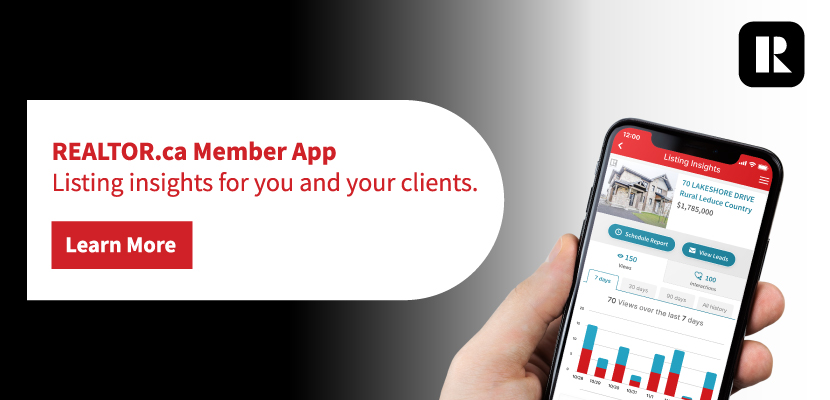Welcome to your regular staging advice column designed exclusively for real estate professionals. Whether you’re grappling with how to enhance the visual appeal of your listings or seeking innovative strategies to captivate your target audience, you’ve come to the right place. This is your opportunity to pose any and all staging-related questions and receive expert advice, for free.
No query is too big or small — if it’s about elevating the look of your real estate, we want to hear it and we want to help! Email your questions to ninadoiron@isodesign.ca
When preparing a property for sale, you may face a critical question: can home staging be customized to fit various budgets and meet the specific needs of sellers?
The short answer is yes. Effective home staging can be adjusted to accommodate a range of financial constraints while still enhancing a property’s appeal to potential buyers.
Home staging is a powerful marketing tool that can significantly impact a property’s sale price and time on the market. For these reasons, staging is a worthwhile investment, but the challenge lies in tailoring this service to fit different financial scenarios.
This article will explore how you can leverage flexible staging solutions to suit different budgets and seller requirements, with practical and actionable tips as well as pros and cons for each solution. We’ll start with the most affordable solutions first.
1. Staging consultation
For sellers with a limited budget, a DIY staging consultation is a cost-effective solution. Professional stagers can provide a detailed report with actionable steps that homeowners can implement themselves. This approach allows sellers to benefit from expert advice without the higher costs associated with full-service staging.
A professional home staging consultation can include decluttering tips, furniture arrangement advice and suggestions for inexpensive updates like new throw pillows and fresh paint. The total cost ($250-$500) is a fraction of full-service staging, yet the home can still present beautifully if homeowners follow all the advice provided.
Most stagers will offer this affordable solution.
Pros
- Cost-effective
- Homeowners receive professional step-by-step guidance
- Flexibility to implement changes at their own pace
Cons
- Requires homeowner effort and time
- May cause delays if homeowners cannot execute on time
- May lack the polished look of professionally executed staging
- Results depend on the homeowner’s ability to follow through with recommendations
2. Virtual staging
Virtual staging is an innovative and budget-friendly alternative to traditional staging. Digital images of empty, sparsely furnished or outdated rooms can be enhanced with virtual furniture and decor to create appealing online listings. There are apps today that allow you to create your own virtually staged photos. Virtual staging can range between $50-$150 per photo.
Pros
- Cost-effective
- Quick and easy to implement
- Ideal for online listings
Cons
- Only effective for online viewing; physical showings may disappoint potential buyers
- Buyers might feel misled if the home appears significantly different in person
- Limited to digital presentation; cannot address physical imperfections when buyers view the property in person
3. Showcasing/photo-prep staging
Showcasing staging, sometimes referred to as photo-prep staging, is a budget-friendly option that utilizes only the homeowner’s belongings to prepare a property for sale. Unlike traditional staging, which involves renting furniture and accessories, showcasing staging focuses on rearranging and enhancing what’s already available in the home.
The stager may recommend the purchase of a few minor items, but the primary cost is their time and expertise. This approach allows homeowners to benefit from professional staging services without the significant expense, often costing less than $1,000.
Pros
- Affordable, often costing less than $1,000
- Utilizes existing furniture and decor, minimizing disruption
- Quick and easy to implement
- Adds a personal touch to the home
Cons
- Limited by the quality and style of the homeowner’s belongings
- May not achieve the same polished look as traditional staging
- Potential buyers may find it harder to visualize the home’s full potential
- Less flexibility in creating a universally appealing aesthetic
4. Occupied staging
Occupied staging leverages the seller’s existing furniture and decor, enhanced with select rented items as needed. Depending on the property, this might involve adding just a few accessories or incorporating some key furniture pieces.
This option is ideal for sellers who continue to live in their homes during the sale process but want to elevate the overall appeal of their space. With the right accents and professional guidance, occupied staging can effectively highlight the property’s best features, making it more attractive to potential buyers.
Occupied home staging can range from $1,500-$3,500
Pros
- Utilizes existing furniture, reducing costs
- Allows sellers to stay in their home
- Professional touches and minimal rental items can add to the home’s charm
Cons
- Limited by the quality and style of existing furniture
- Potentially disruptive for the occupants
- May not achieve the same level of polish as a fully staged home
5. Partial staging
Partial staging is a versatile approach that can be applied to both occupied and vacant properties.
For occupied homes, partial staging typically involves adding or rearranging a selection of furniture and accessories to enhance the home’s appeal. This service generally ranges from $1,000-$2,000.
In the case of vacant properties, partial staging might include furnishing key areas like the living room, dining room and primary suite to give potential buyers a sense of the home’s potential. The cost for this level of staging usually falls between $3,000 and $5,000.
This approach is ideal for sellers who want to highlight key spaces without the expense of staging the entire property.
Pros
- Highlights key areas
- More affordable than full-service staging
- Effective in showcasing the home’s best features
Cons
- Other areas of the home may appear less appealing
- Potential buyers might feel the home is incomplete
- Limited to selected spaces, which might not be enough in highly competitive markets
6. Full-service staging for maximum impact
For sellers seeking maximum impact and who have a larger budget, full-service staging offers a transformative approach that dramatically enhances a property’s appeal. This comprehensive solution is particularly effective for vacant properties and involves the complete furnishing and decoration of all indoor and sometimes outdoor spaces.
The investment for fully staging a four-bedroom property with a finished basement typically ranges from $6,000-$10,000. This cost reflects the high level of detail and the quality of furnishings used to present the home in the best possible light.
Pros
- Comprehensive and cohesive look throughout
- Professional execution ensures high-quality presentation
- Maximizes appeal and potential sale price
Cons
- Higher cost
- Requires more coordination and time
- Might be overkill for lower-priced or less competitive markets
Tailoring home staging to suit different budgets and seller needs is not only possible but essential for maximizing a property’s market potential.
You can offer a range of staging options, from budget-friendly consultations to full-service staging, ensuring that every seller can present their home in the best possible light. By understanding and accommodating various financial constraints and property types, you’ll help your sellers achieve successful sales in any market.
Got home staging questions for a future column? Submit them to ninadoiron@isodesign.ca

Award-winning Certified UltimateStager, redesigner and owner Nina Doiron is the principal at iSO Design. She provides an objective and experienced eye to attract more buyers and help sell for top dollar. She will also help you declutter and get organized. She says she will “inspire redesign ideas so that you’ll fall in love with your home again.” Call 416-993-0131.














